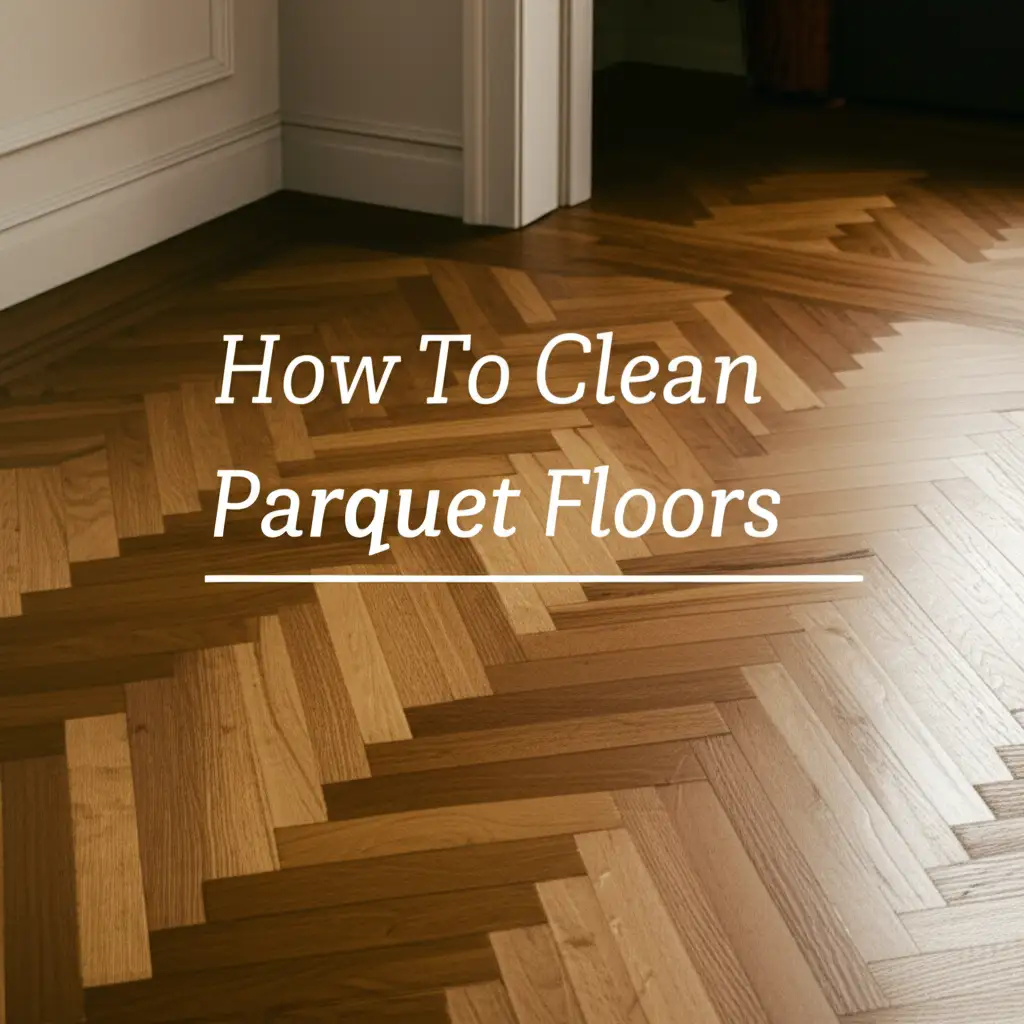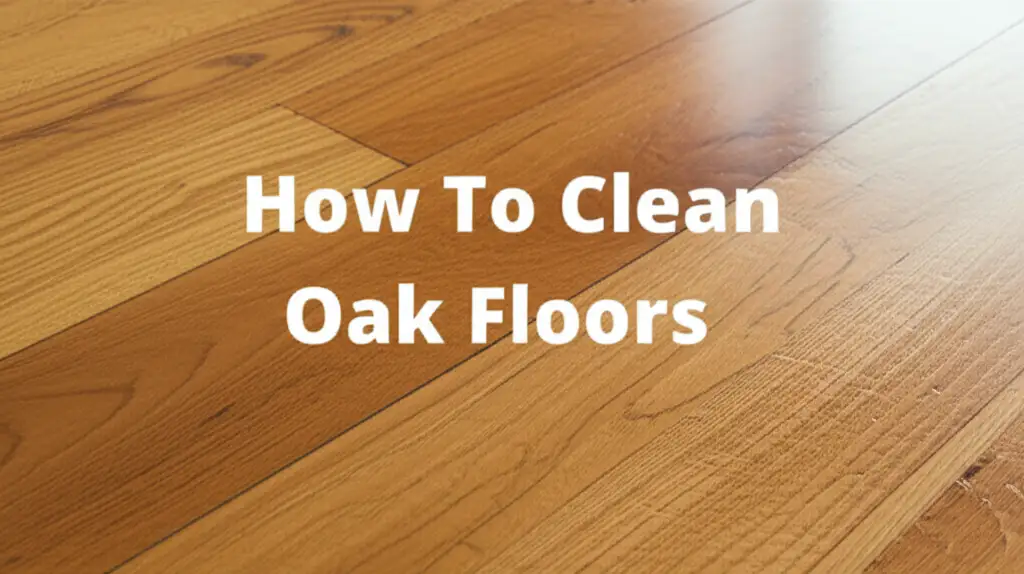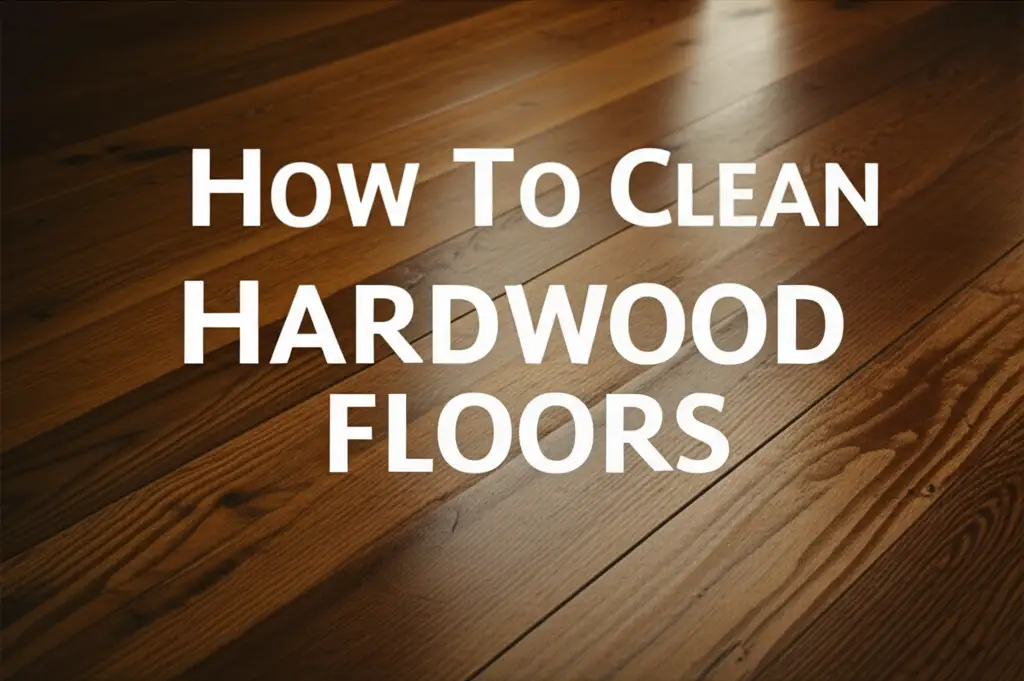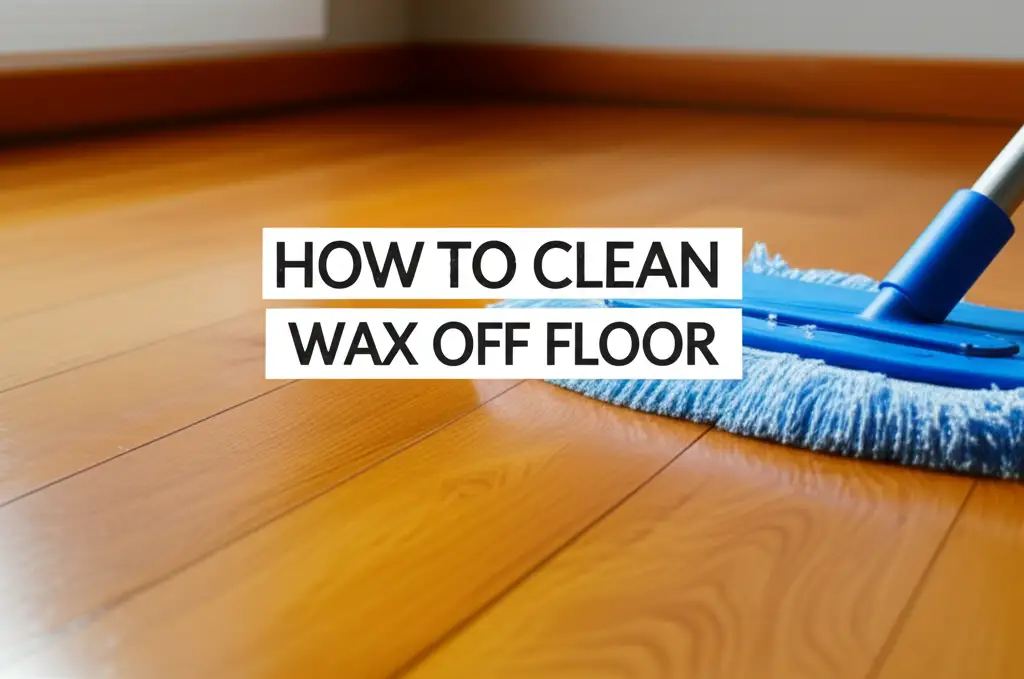· Floor Care · 23 min read
How To Clean Dog Urine From Hardwood Floors
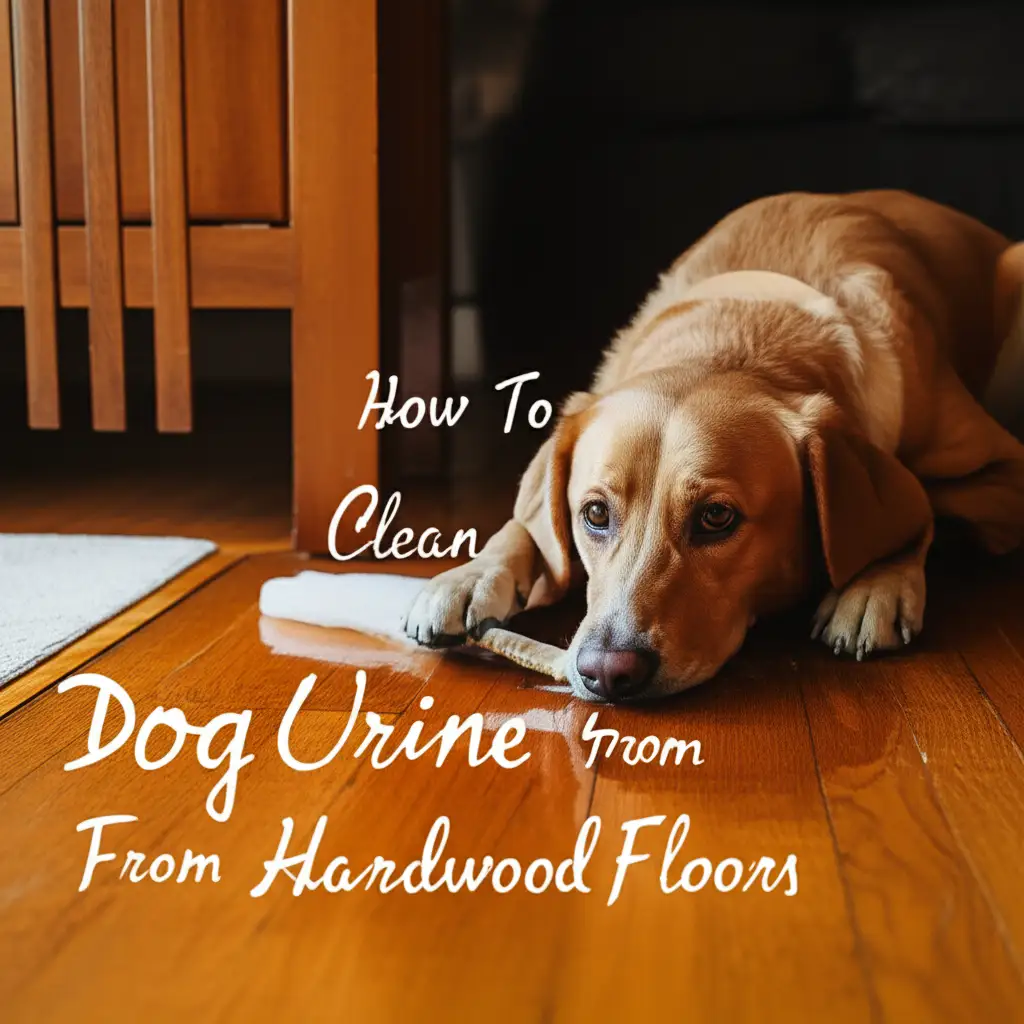
Mastering Dog Urine Cleanup on Hardwood Floors
Pet accidents happen. When your furry friend has an accident on your beautiful hardwood floors, quick action is vital. Dog urine can quickly penetrate wood, leading to dark stains and unpleasant odors. This comprehensive guide shows you exactly how to clean dog urine from hardwood floors. We will cover immediate cleanup for fresh spots, effective methods for old stains, and strategies to banish lingering smells. You will learn the best products and techniques to restore your floors to their original condition.
Takeaway
- Act fast on fresh urine to prevent damage.
- Use enzymatic cleaners for the best results on stains and odors.
- Avoid harsh chemicals like ammonia or bleach on wood.
- Address both the stain and the odor for complete removal.
- Consider professional help for severe or old damage.
To clean dog urine from hardwood floors, blot fresh puddles immediately, then use an enzymatic cleaner specifically designed for pet stains. For old or set-in stains, a hydrogen peroxide poultice can help lighten the spot. Always finish by ensuring the odor is fully neutralized to prevent re-soiling.
Immediate Response: Cleaning Fresh Dog Urine Accidents
Finding a fresh puddle of dog urine on your hardwood floor needs a fast reaction. Every second counts when it comes to preventing permanent damage. The quicker you act, the less likely the urine will soak deep into the wood or its finish. Immediate cleanup helps protect your floor’s integrity and appearance. It also makes the overall cleaning process much easier.
Gather Your Supplies Quickly
Before you touch the mess, gather the right tools. You will need absorbent paper towels or clean cloths. Old towels work well too, as long as they are clean. Keep a spray bottle filled with a gentle cleaning solution nearby. This solution can be a mixture of white vinegar and water, or a specialized pet cleaner. Having everything ready saves valuable time.
The Blotting Technique
Do not wipe the urine. Wiping can spread the liquid and push it deeper into the wood grain. Instead, blot the area firmly. Press paper towels onto the puddle. Let the towels soak up as much liquid as possible. Replace saturated towels with fresh ones until no more moisture transfers. This step is crucial for removing the bulk of the urine.
Initial Surface Cleaning
Once you blot up the standing liquid, it is time for a surface clean. Spray the remaining wet spot with your chosen cleaning solution. A 50/50 mix of white vinegar and water works well for this initial pass. White vinegar helps neutralize odors and is safe for most sealed hardwood. Lightly scrub the area with a clean cloth or soft brush. Avoid saturating the wood. The goal is to lift any remaining urine residue from the surface.
Drying the Area Properly
After cleaning, dry the area thoroughly. Use a clean, dry towel to absorb any moisture. You can also use a fan to speed up the drying process. Ensure the spot is completely dry before moving on. Excess moisture can warp or damage hardwood over time. Proper drying prevents mold or mildew growth under the finish. A dry surface also prepares the area for odor treatment.
Assessing the Damage
Once dry, inspect the floor. For fresh accidents, you might see no visible stain if you acted quickly. However, a faint odor might still be present. If you see a slight darkening, this means some urine has penetrated the finish. Do not worry. The next steps will help address both the hidden odor and any light staining. Early intervention prevents these issues from becoming larger problems.
Effective DIY Solutions for Urine Stains
Dealing with dog urine on hardwood floors does not always require harsh chemicals. Many effective cleaning solutions are likely already in your pantry. These DIY methods are safe for most sealed hardwood finishes and gentle on your pet. They help neutralize odors and lift stains naturally. Using common household items makes cleaning accessible and eco-friendly.
White Vinegar: A Powerful Neutralizer
White vinegar is a cleaning superhero, especially for pet accidents. It neutralizes the ammonia in urine, which helps eliminate the odor. Mix one part white vinegar with one part warm water in a spray bottle. After blotting up as much urine as possible, lightly mist the affected area with this solution. Let it sit for 5-10 minutes. Then, wipe it dry with a clean cloth. The vinegar smell will dissipate as it dries, leaving your floor fresh. This simple mixture is very effective for fresh stains and surface odors.
Baking Soda: An Odor Absorber
Baking soda is another excellent natural cleaner and deodorizer. It absorbs odors rather than masking them. Once you have blotted the urine and cleaned the spot with a vinegar solution, sprinkle a generous amount of baking soda over the damp area. Make sure it covers the entire affected spot. Let the baking soda sit for several hours, or even overnight, to absorb deep-seated odors. For information on combining these two powerhouses, you can read more about how to clean with vinegar and baking soda. After it has done its work, vacuum up the baking soda. The floor should smell much cleaner.
Hydrogen Peroxide: For Lightening Stains
Hydrogen peroxide (3% solution) can help lighten mild urine stains on hardwood. Test it first in an inconspicuous area, as it can lighten some finishes. Apply a small amount of 3% hydrogen peroxide directly to the stained area. You can dab it with a clean cloth. Let it sit for 10-15 minutes, but do not let it dry on the wood. Wipe it thoroughly with a damp cloth and then dry the area completely. This method is best for recent, light discolorations that haven’t fully set. Do not use higher concentrations of hydrogen peroxide.
Lemon Juice: Fresh Scent and Mild Acid
Lemon juice provides a fresh scent and acts as a mild acid. It can help break down some urine components and neutralize odors. Mix fresh lemon juice with an equal amount of water. Apply it to the stained area with a cloth, just as you would with vinegar. Let it sit for a few minutes, then wipe it clean and dry. Like hydrogen peroxide, test it first to ensure it does not affect your floor’s finish. This method is good for minor stains and general freshening.
Cautions with DIY Solutions
While these DIY solutions are generally safe, always exercise caution. Never mix vinegar or lemon juice with hydrogen peroxide. This creates peracetic acid, which is highly corrosive. Avoid using ammonia-based cleaners; they can break down the wood finish and attract your pet back to the spot. Also, never oversaturate your hardwood floors with any liquid, as excess moisture can cause warping or water damage. Always work in small sections and dry thoroughly.
Specialized Enzymatic Cleaners for Pet Urine
When it comes to cleaning dog urine from hardwood floors, especially for set-in stains and lingering odors, specialized enzymatic cleaners are your secret weapon. These cleaners work differently than traditional detergents. They contain beneficial bacteria that produce enzymes. These enzymes break down the organic matter in urine, like uric acid crystals, which cause both the stain and the persistent odor. This process eliminates the problem at its source, rather than just masking it.
Why Enzymatic Cleaners Are Superior
Traditional cleaners might remove the visible stain, but they often leave behind microscopic uric acid crystals. These crystals re-crystallize when exposed to humidity, reactivating the strong urine smell. Enzymatic cleaners digest these crystals. They break them down into harmless carbon dioxide and water. This thorough breakdown means the odor is truly gone, not just covered up. This is crucial for preventing your dog from returning to the same spot. Dogs are attracted to their own scent, even if you cannot smell it anymore.
How to Choose the Right Enzymatic Cleaner
Not all enzymatic cleaners are equal. Look for products specifically formulated for pet urine and suitable for hardwood floors. Some cleaners are designed for carpets and might leave residue or be too harsh for wood. Read product labels carefully. Ensure the cleaner explicitly states it is safe for sealed wood. Check reviews from other pet owners with hardwood floors. Popular brands often offer effective enzymatic solutions.
Step-by-Step Application
Applying an enzymatic cleaner requires patience. First, clean the area as much as possible using the immediate response methods. Blot up all liquid. Then, follow the specific instructions on your chosen cleaner. Generally, you will:
- Saturate the Stain: Apply the enzymatic cleaner directly to the stained area. Make sure it covers the entire spot, and extends slightly beyond it, as urine can spread under the surface. The wood needs to stay moist with the cleaner for a period.
- Allow Dwell Time: This is the most critical step. Enzymatic cleaners need time to work. The bacteria need to consume the uric acid. This can range from 30 minutes to several hours, or even overnight, depending on the product and the severity of the stain. You may cover the area with plastic wrap to prevent the cleaner from drying too quickly.
- Blot and Dry: Once the dwell time is complete, blot up any excess cleaner. Do not rinse the area with water immediately. Let the area air dry completely. The enzymes continue working as long as the area remains slightly damp. You can place a fan nearby to aid circulation and drying.
- Repeat if Necessary: For old or deep stains and odors, you might need to repeat the process. Stubborn issues may require multiple applications over several days. Be patient. Complete removal often takes time.
Important Considerations
- Patience is Key: Enzymatic processes are not instant. Give the product enough time to work.
- Avoid Other Cleaners: Do not use other cleaners, especially ammonia-based ones, before or during the enzymatic treatment. They can kill the beneficial bacteria and render the enzymatic cleaner ineffective.
- Ventilation: Ensure good ventilation in the room while the cleaner is working and drying.
- Test Area: Always test the enzymatic cleaner on an inconspicuous spot of your hardwood floor first. This ensures it does not discolor or damage your specific finish. Different wood finishes react differently.
Using a high-quality enzymatic cleaner is often the most effective way to permanently remove dog urine stains and odors from hardwood floors. It addresses the root cause of the problem, giving you lasting relief.
Tackling Old or Dried Dog Urine Stains on Hardwood
Old or dried dog urine stains on hardwood floors present a tougher challenge than fresh accidents. Over time, urine penetrates deeper into the wood grain and reacts with the wood tannins, creating dark, stubborn spots. The uric acid crystals crystallize, making both the stain and the odor harder to remove. However, with the right approach, you can often significantly improve or even eliminate these old marks. Patience and persistence are crucial for success here.
Assessing the Depth of the Stain
Before you begin, try to assess how deeply the urine has penetrated. Surface-level stains might respond to milder treatments. Deeply absorbed urine can go through the finish and into the wood itself, sometimes even reaching the subfloor. If the stain is very dark and seems to have discolored the wood fibers, it might require more intensive methods. Visible swelling or warping indicates significant moisture damage.
Hydrogen Peroxide Poultice Method
For dark, set-in stains, a hydrogen peroxide poultice can be highly effective. This method uses the bleaching power of hydrogen peroxide to lift the discoloration. You will need 3% hydrogen peroxide, paper towels, and plastic wrap.
- Prepare the Poultice: Soak several layers of paper towels in 3% hydrogen peroxide until they are saturated but not dripping.
- Apply to Stain: Lay the soaked paper towels directly over the entire stained area. Ensure good contact with the wood.
- Cover and Wait: Cover the paper towels with plastic wrap. This prevents the hydrogen peroxide from evaporating too quickly. Secure the edges of the plastic wrap with painter’s tape if needed.
- Monitor: Let the poultice sit for several hours, or even overnight for very dark stains. Check periodically. The stain should start to lighten.
- Remove and Dry: Once the stain has lightened to your satisfaction, remove the poultice. Wipe the area thoroughly with a clean, damp cloth, then dry it completely with a dry cloth. You can use a fan to assist drying.
- Repeat if Needed: Stubborn stains may require multiple applications. Be patient and repeat the process if necessary. Always let the wood dry completely between applications.
Important Note: Hydrogen peroxide can lighten or strip some wood finishes. Always test this method in an inconspicuous area first.
Sanding and Refinishing (Last Resort for Deep Stains)
If the stain is exceptionally deep and has permanently discolored the wood fibers, surface treatments might not be enough. In such cases, sanding and refinishing the affected area or the entire floor becomes necessary.
- Spot Sanding: For isolated stains, you can carefully sand down the discolored area. Start with a medium-grit sandpaper (e.g., 100-120 grit) to remove the top layers of finish and stained wood. Then, use a finer grit (e.g., 180-220 grit) to smooth the area.
- Cleaning and Prepping: After sanding, thoroughly clean the area to remove all dust. You may then apply an enzymatic cleaner to address any remaining odor from deep within the wood, allowing it to dry completely.
- Stain and Finish Matching: The biggest challenge here is matching the new stain and finish to your existing floor. This often requires professional expertise. Applying a new finish without proper matching will create an obvious patch.
- Full Floor Refinishing: If there are multiple large, deep stains, or if you cannot match the finish, a full floor refinishing might be the best option. This involves sanding down the entire floor to bare wood, treating any remaining stains, and then applying new stain and multiple coats of finish. This is a significant project but yields a uniformly beautiful floor.
Addressing Residual Odor
Even after lightening a stain, the odor-causing uric acid crystals might remain deep within the wood. Use an enzymatic cleaner after any poultice or sanding treatment to ensure complete odor elimination. Saturate the cleaned area with the enzymatic cleaner, allow it to dwell for the recommended time, and then let it air dry completely. This step is critical to prevent the odor from resurfacing and to deter your pet from re-marking the spot.
Eliminating Persistent Dog Urine Odor from Wood Floors
Removing the visible stain from dog urine on hardwood floors is only half the battle. The lingering odor, often imperceptible to humans but strong to pets, is crucial to eliminate. This smell comes from uric acid crystals that penetrate the wood. If not fully neutralized, these crystals re-crystallize in humidity, releasing the offensive odor again. A persistent odor can also encourage your dog to mark the same spot repeatedly.
Understanding the Odor Source
Dog urine contains urea, urochrome, and uric acid. While urea and urochrome are largely responsible for the initial color and smell, uric acid crystals are the real culprits for persistent odors. These crystals are insoluble in water and many common cleaners. They embed themselves in porous materials like wood. Traditional cleaning only removes the superficial elements. The key is breaking down these crystals.
The Power of Enzymatic Cleaners (Revisited)
Enzymatic cleaners are paramount for odor elimination. As discussed, these cleaners contain beneficial bacteria that produce enzymes. These enzymes specifically target and break down the uric acid crystals. They convert them into odorless gases and water. This process truly eliminates the odor source, rather than just masking it.
- Application Method: After cleaning the visible stain, generously saturate the affected area with a high-quality enzymatic cleaner designed for pet odors on hard surfaces.
- Dwell Time is Critical: Allow the cleaner to sit for the recommended dwell time, which can be several hours, or even overnight for stubborn odors. Some experts recommend keeping the area moist with the cleaner by covering it with plastic wrap. This allows the enzymes maximum time to work.
- Air Dry: Do not rinse the cleaner off. Let the area air dry completely. The enzymes continue working as long as the area is damp. Ensure good ventilation in the room.
Using Odor-Absorbing Materials
While enzymatic cleaners work on the source, other materials can help absorb lingering airborne odors or draw out residual smells.
- Baking Soda: After the enzymatic cleaner has dried, sprinkle a generous layer of baking soda over the area. Baking soda is a natural deodorizer that absorbs smells. Let it sit for at least a few hours, or overnight, then vacuum it up. Repeat if necessary.
- Activated Charcoal: For widespread or severe odors, bowls of activated charcoal placed around the affected area can help absorb airborne odors. This is a passive method but effective for general room deodorizing. Do not place it directly on the floor.
Addressing Under-Floor Odors
Sometimes, urine can seep through floorboards and into the subfloor or even the floor joists. If the odor persists after treating the surface and wood planks, the problem might be deeper.
- Inspection: You may need to inspect the subfloor. This could involve carefully removing a floorboard or checking from a basement or crawl space below.
- Deep Treatment: If the subfloor is affected, you will need to treat it with an enzymatic cleaner. Apply the cleaner directly to the affected subfloor area. Allow it to penetrate and dry thoroughly. In extreme cases, a section of the subfloor may need replacement.
- Sealants: After thorough cleaning and drying, consider applying an odor-blocking primer or sealant to the subfloor or the underside of the affected hardwood planks. This creates a barrier against any residual odors.
Importance of Ventilation
Good air circulation is vital throughout the odor removal process. Open windows, use fans, or run an air purifier to help dissipate odors and dry the affected area faster. Proper ventilation helps remove any lingering airborne smell particles. This also prevents moisture buildup, which can reactivate uric acid crystals. Ensure the entire area is fully dry after any cleaning treatment.
Protecting Hardwood Floors from Future Dog Urine Damage
Preventing dog urine accidents is always better than cleaning them. Proactive measures protect your beautiful hardwood floors from future damage and spare you the cleanup hassle. A combination of training, physical barriers, and smart habits can significantly reduce the risk of pet-related floor problems. Protecting your floors saves money on repairs and preserves their longevity.
Reinforce Potty Training
Consistent potty training is the most effective long-term solution.
- Frequent Potty Breaks: Take your dog outside frequently, especially after waking up, eating, and playing. Young puppies or older dogs with health issues need more frequent breaks.
- Positive Reinforcement: Reward your dog immediately when they eliminate outside. Use treats, praise, and play. This builds a strong positive association with outdoor potty breaks.
- Supervision: Supervise your dog indoors, especially during training periods. If you cannot supervise them, confine them to a pet-safe area, like a crate or a room with easily cleanable floors.
- Recognize Signals: Learn your dog’s signals for needing to go out. These can include sniffing around, pacing, whining, or heading towards the door.
- Clean Accidents Thoroughly: As discussed, always clean accidents with an enzymatic cleaner. This eliminates the odor that attracts your dog back to the same spot.
Use Protective Barriers
Physical barriers offer an immediate layer of protection for your hardwood.
- Area Rugs and Mats: Place area rugs on hardwood floors in high-traffic areas or spots where accidents are more likely. Use waterproof-backed rugs or place a waterproof pad underneath. This protects the wood from spills and accidents. Entryways, feeding areas, and play zones are good candidates for rugs.
- Pet-Friendly Floor Runners: Long runners in hallways or high-traffic paths can protect the wood from daily wear and tear, as well as accidental spills. Choose washable materials.
- Booties or Socks: For very small, contained accidents, some dog owners use dog booties or waterproof socks. This is a temporary solution for specific situations, like when a dog is recovering from surgery.
Maintain Your Hardwood Floor’s Sealant
The finish on your hardwood floor acts as a protective barrier against moisture.
- Regular Cleaning: Keep your floors clean to prevent grime buildup that could compromise the finish. Use a hardwood-specific cleaner that does not leave residue.
- Check for Wear: Regularly inspect your floor for signs of wear on the finish, such as dull spots, scratches, or areas where the sealant appears thin. These spots are vulnerable to urine penetration.
- Re-sealing: If your finish is worn, consider re-sealing or re-coating your floors. A professional can assess whether a simple re-coat is sufficient or if a full refinishing is needed. A strong, intact sealant gives you more time to clean up accidents before they soak in.
Address Health Issues Promptly
Sometimes, accidents are not a training issue but a medical one.
- Consult Your Vet: If your dog suddenly starts having accidents, especially if they were previously house-trained, consult your veterinarian. Urinary tract infections, kidney issues, diabetes, and other health problems can cause incontinence. Addressing the underlying medical issue is crucial.
- Age-Related Incontinence: Older dogs may develop incontinence. Your vet can recommend medications or management strategies. Using absorbent dog diapers or wraps indoors can be helpful for incontinent pets.
By combining consistent training, physical protection, regular floor maintenance, and addressing any health concerns, you can significantly reduce the likelihood of future dog urine damage on your hardwood floors.
When to Call a Professional for Hardwood Floor Restoration
Sometimes, even with the best efforts, dog urine can cause severe damage to hardwood floors. There are situations where DIY methods are no longer sufficient, and professional help becomes necessary. Knowing when to call in an expert can save you time, effort, and potentially prevent further, more costly damage. Professionals have specialized tools, chemicals, and expertise to tackle problems beyond a typical homeowner’s capabilities.
Extensive or Deep-Seated Stains
You might have a stain that is simply too large, too dark, or too deeply embedded for home treatments. If you have tried the hydrogen peroxide poultice method multiple times without significant improvement, the stain has likely permeated the entire thickness of the wood plank. In these cases, superficial cleaning will not work. A professional can assess the depth of the damage and determine if spot repair, sanding, or plank replacement is needed. They can also use stronger, professional-grade bleaching agents if appropriate.
Persistent Odor After Multiple Treatments
If you have diligently used enzymatic cleaners, baking soda, and ensured thorough drying, yet the urine odor still lingers, it indicates a deeper problem. The odor-causing uric acid crystals might have seeped into the subfloor, insulation, or even the floor joists underneath. This issue requires lifting floorboards to access and treat the underlying structures. A professional floor restorer has the equipment and expertise to identify and remediate these hidden odor sources effectively without damaging your home’s structural integrity.
Warping, Cupping, or Buckling of Boards
Urine is mostly water. If a large amount of urine saturates the wood and remains wet for an extended period, it can cause severe moisture damage. This leads to issues like:
- Warping: Boards twist or bend.
- Cupping: The edges of boards rise, making the center appear lower.
- Buckling: Boards lift completely from the subfloor.
These are structural issues with the wood. DIY fixes for such damage are often ineffective. A professional can determine if the boards can be re-flattened, if individual boards need replacement, or if a larger section of the floor requires repair. They can also address any underlying moisture issues that contributed to the problem.
Compromised Finish or Mold Growth
If the urine has severely compromised the hardwood finish, leaving it dull, stripped, or sticky, it might need more than a simple cleaning. A professional can assess the finish and recommend re-coating or full refinishing. Additionally, prolonged moisture from urine can lead to mold or mildew growth, especially if it seeps into crevices or under the floor. Mold poses health risks and requires specialized removal. A professional can safely and effectively remove mold and prevent its recurrence.
Valuation and Resale Concerns
If you are planning to sell your home, or if the floor is a significant aesthetic feature, professional restoration is a worthwhile investment. Obvious pet stains and odors can significantly devalue a property. A professional can restore your floors to their original beauty, increasing your home’s appeal and value. They can achieve a seamless look that DIY attempts often cannot match, especially when dealing with stain matching or complex repairs.
Frequently Asked Questions
Is dog urine ruin hardwood floors permanently?
Dog urine can permanently damage hardwood floors if not cleaned promptly. The acidic nature of urine can strip the finish and stain the wood fibers dark. Lingering moisture can also cause the wood to warp or buckle. Early and proper cleaning, especially with enzymatic cleaners, can prevent permanent damage.
What is the best cleaner for dog urine on hardwood floors?
Enzymatic cleaners are the best for dog urine on hardwood floors. They contain enzymes that break down uric acid crystals, which cause both the stain and the odor. For fresh accidents, a mix of white vinegar and water can be effective. Always ensure the product is safe for sealed wood.
How do you get old dog urine stains out of wood floors?
For old dog urine stains, a hydrogen peroxide (3%) poultice can help lighten the dark discoloration. Apply a hydrogen peroxide-soaked paper towel covered with plastic wrap to the stain, letting it sit for several hours. This method may require multiple applications. If the stain is very deep, sanding and refinishing might be necessary.
How do you get the smell of dog urine out of hardwood floors?
To remove the smell of dog urine, you must neutralize the uric acid crystals. Saturate the affected area with an enzymatic cleaner and allow it to air dry completely without rinsing. The enzymes will break down the odor-causing compounds. You can also sprinkle baking soda over the dried area to absorb any remaining odors.
Can I use bleach on dog urine stains on hardwood?
No, you should not use bleach on dog urine stains on hardwood floors. Bleach can permanently discolor or strip the wood finish. It can also damage the wood fibers themselves. Stick to safer alternatives like enzymatic cleaners, white vinegar, or hydrogen peroxide (with caution and patch testing).
How do professionals remove dog urine from hardwood?
Professionals use industrial-strength enzymatic cleaners and specialized equipment to remove dog urine. For severe stains, they may sand down the affected area or the entire floor. They can also use ozone generators or other advanced odor remediation techniques for deep-seated smells. In cases of structural damage, they replace affected floorboards or subfloor sections.
Conclusion
Cleaning dog urine from hardwood floors can feel daunting, but with the right approach, you can restore your beautiful floors. Immediate action is your first defense against fresh accidents. Blotting up fresh urine quickly and applying simple DIY solutions like white vinegar can prevent minor mishaps from becoming major problems. For set-in stains and stubborn odors, specialized enzymatic cleaners are essential. These products truly break down the odor-causing uric acid crystals, ensuring the smell is gone for good.
Remember, patience is a virtue when dealing with persistent stains and odors. Some problems may require multiple treatments or the use of a hydrogen peroxide poultice. Most importantly, focus on both removing the visible stain and completely eliminating the underlying odor. By following these steps, you safeguard your hardwood floors from future damage through proactive measures like consistent potty training and using protective barriers. If you face extensive damage, do not hesitate to consult a professional. Your hardwood floors can remain a stunning feature of your home, even with a beloved pet. You now have the knowledge to confidently handle any dog urine accident on your beautiful wood floors.
- hardwood floor cleaning
- dog urine removal
- pet stain removal
- odor elimination
- wood floor care

